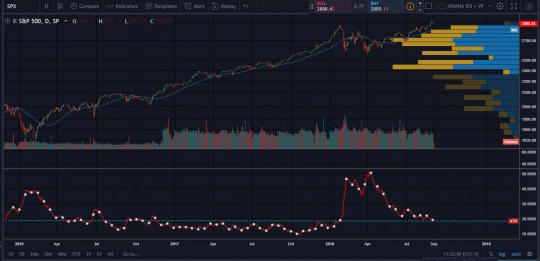If you aren’t aware who Kendall Roy is, make time to watch HBO’s “Succession” which recently wrapped its first season. It’s spectacularly entertaining and you don’t want to miss it.
Look at that, it’s September. For those who have been in the game for a while you can pen the headlines before even setting foot on a financial website. For those who haven’t been around long, allow me to help…
” Stock Market Likely To Undergo Vigorous Stress Test In September”
“September To Be Extra Volatile As Increasing Trade Tensions Pressure Markets”
“Stocks Return To Highs Paving The Way For A Volatile September”
Etc. Etc. Etc.
Volatility. A term used to describe market movement, but often misunderstood. I thought since September is widely known as a “volatile” month in the markets we could talk a bit about how the term is misused in financial markets.

An article on volatility wouldn’t be complete without mentioning the CBOE Volatility Index (The VIX). Known as the “Fear Gauge” of the overall market, the VIX is a mainstay on all investor / trader screens. In short, the higher the VIX reading, the more fear in the markets and oftentimes, the stronger the market sell offs (but not always). It is absolutely possible to have a market advancing as the VIX climbs higher. It is important to remember that the VIX is a measure of investors’ expectations on future market volatility, not necessarily direction.
For those who want to know more about the VIX I did this post some time ago: More Than You Ever Wanted To Know About The VIX
A reading of “20” on the VIX is a rule of thumb level followed by option traders. Below 20, is often considered a low volatility environment, while above is seen as more volatile.
Currently:

A quiet environment.

Another volatility measurement and my personal preference is the Average True Range. ATR like the VIX doesn’t forecast direction, rather it is used to measure volatility caused by gaps and powerful moves in one direction or another. ATR is an indicator I have at the bottom of almost all of my charts whether indexes, individual stocks, futures, etc.
A look at ATR on the SPX currently:


The horizontal line shows the average ATR over the past couple of years. As you can see, while we have had a bout with high volatility in the major bench mark index this year, we have fallen back to average levels as of late.
With two major volatility gauges at normal or below normal levels, all that is left are the noisemakers in the financial media all trying to grab your attention for clicks. Fear sells better than optimism and the old adage “The higher the VIX the higher the clicks” will continue to hold true.
An article in the WSJ this morning quoted the following:
“Global-fund managers are holding higher-than-average levels of cash in their portfolios. Shares of utilities and real-estate firms, considered bond-like because of their dividend payouts, have started to rebound over the past couple of months. And firms including Morgan Stanley and RBC Capital Markets have recommended unloading technology stocks, the best-performing S&P 500 sector in 2018.”
Higher than average cash levels are not, and haven’t ever been a precursor to a major market decline.
This rally continues.
OC
